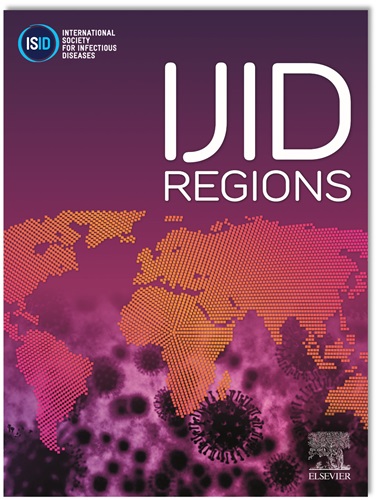Detection of COVID-19 Outbreaks with Whole Genome Sequencing by Oxford Nanopore Technology in a Tertiary Centre, Malaysia
IF 4.8
2区 医学
Q1 INFECTIOUS DISEASES
引用次数: 0
Abstract
Introduction
The SARS-CoV-2 virus genome surveillance is important to monitor and track emerging variants. In a hospital setting, this will help identify both community and inter and intrahospital transmission and, if performed in real-time, will reduce the rate of the disease spread by immediately implementing infection control measures. The study aims to describe the COVID-19 outbreaks from the SARS-CoV-2 virus genomic surveillance by whole genome sequencing (WGS).
Methods
101 laboratory-confirmed clinical isolates belonging to patients with COVID-19 from June 2021 to June 2022 were subjected to WGS. The sequences were assembled using Bioinformatic tools EPI2ME software by the Oxford Nanopore technology (ONT). Based on the Q10 quality score, 86 isolates were subjected to phylogenetic tree analyses using the Maximum Likelihood method in MEGA 11 software. The sequencing process reached 100% coverage within 16 hours. The sociodemographic and clinical data were retrieved from both the hospital information systems (UNIMEDS) and patients’ medical records. Patients’ clinical presentations were categorized into mild and severe.
Results
Phylogenetic analysis revealed 7 clusters of COVID-19 outbreaks with 24 patients showing only mild symptoms. The first three clusters (Cluster I, II and III) were found to have circulated from June to July 2021 and belonged to Clade GK (Delta variant). Cluster I showed transmission from a father to his 2 sons. Cluster II involves transmission between the 2 siblings from different families. Cluster III suggested an intrahospital transmission between medical staff and medical students. Meanwhile, from February to April 2022, four clusters were detected within Clade GRA (Omicron Variant). Cluster IV involved 3 medical students who stayed in the same residential college. Cluster V involved a group of medical staff with 1 university student. Cluster VI also involved a group of 3 university students, indicating possible transmission within their residential area. Cluster VII involved infection between family members from mother to her child.
Discussion
In our study, we were able to track 1 intrahospital transmission, 1 inter-hospital and 5 community COVID-19 transmissions based on the phylogenetic tree. No new viral variants were found. The viral evolutions were of a similar pattern to what is being described globally. This WGS technique has been shown to give a faster turnaround time.
Conclusion
The WGS has enabled laboratory scientists and epidemiologists to detect the occurrence of COVID-19 outbreaks as well as genomic surveillance. Due to its robustness and rapid sequencing results, this technique could be used in real-time in the hospital setting to prevent further transmission of the infection.
求助全文
约1分钟内获得全文
求助全文
来源期刊
CiteScore
18.90
自引率
2.40%
发文量
1020
审稿时长
30 days
期刊介绍:
International Journal of Infectious Diseases (IJID)
Publisher: International Society for Infectious Diseases
Publication Frequency: Monthly
Type: Peer-reviewed, Open Access
Scope:
Publishes original clinical and laboratory-based research.
Reports clinical trials, reviews, and some case reports.
Focuses on epidemiology, clinical diagnosis, treatment, and control of infectious diseases.
Emphasizes diseases common in under-resourced countries.

 求助内容:
求助内容: 应助结果提醒方式:
应助结果提醒方式:


